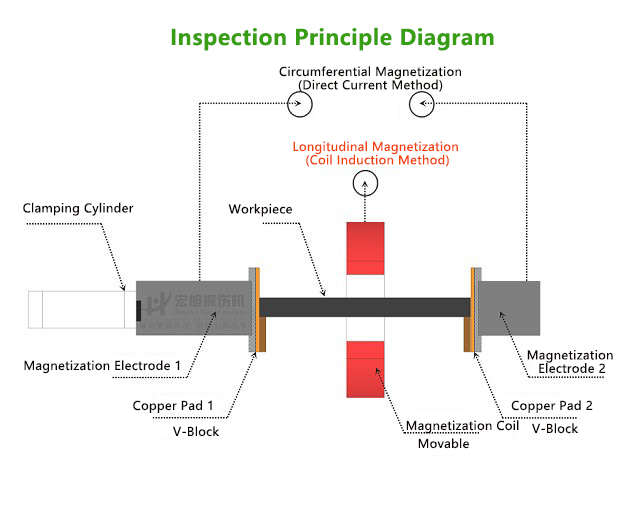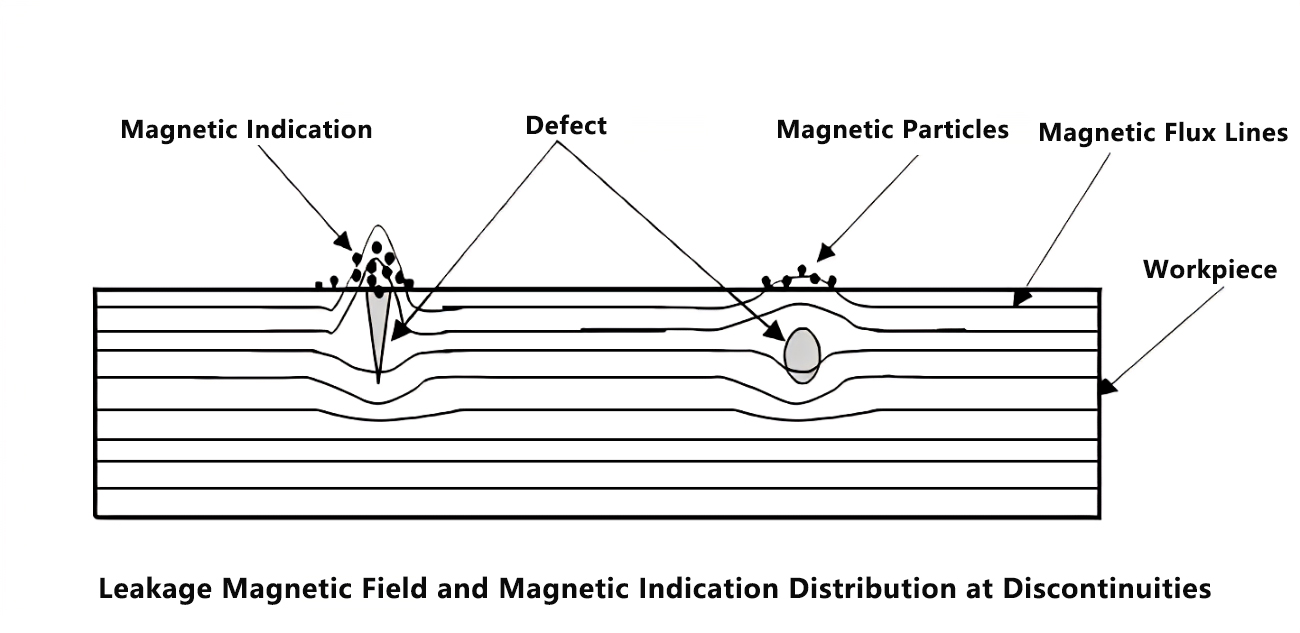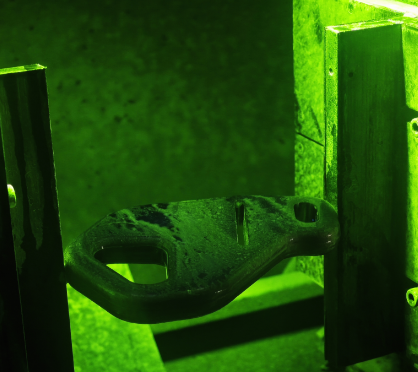I. Basic Principle of Magnetic Particle Testing
The core of magnetic particle testing lies in the magnetization process and the use of magnetic particles. First, an induced magnetic field is generated in the workpiece through a coil, magnetic yoke or other magnetizing devices. When there are defects such as cracks, inclusions, or porosity on the surface or near the surface of the workpiece, the magnetic flux lines will be distorted, and some of the magnetic flux will leak out of the workpiece surface, forming a leakage magnetic field. Subsequently, magnetic particles are applied to the surface of the workpiece. These particles are attracted by the leakage magnetic field and accumulate at the defect, forming a clear magnetic indication.

II. Classification of Magnetic Particle Testing
Magnetic particle testing can be classified into various types based on different criteria. Each type has its specific application scenarios and advantages. Choosing the appropriate magnetic particle testing method can effectively improve detection efficiency and accuracy.
Classification by Magnetization Method
Circumferential Magnetization: A circumferential magnetic field is generated inside the workpiece through a conductor or coil; it is suitable for detecting transverse defects perpendicular to the workpiece axis.
Longitudinal Magnetization: A longitudinal magnetic field is generated inside the workpiece through a magnetic yoke or coil; it is suitable for detecting transverse defects perpendicular to the workpiece axis.
Composite Magnetization: Using circumferential and longitudinal magnetization methods simultaneously or alternately; it is suitable for detecting defects in multiple directions and improves detection efficiency.
Classification by Magnetic Particle Type
Dry Method: Using dry magnetic particles, suitable for rough surfaces and high-temperature environments; commonly used for large workpieces and on-site detection.
Wet Method: Using magnetic particles suspended in a liquid, suitable for smooth surfaces and fine detection; commonly used for small workpieces and laboratory detection.
Classification by Magnetic Particle Indication Method
Visible Light Magnetic Particle Testing: Using ordinary magnetic particles and observing indications under visible light; suitable for general industrial detection.
Fluorescent Magnetic Particle Testing: Using fluorescent magnetic particles and observing indications under ultraviolet light, which offers higher sensitivity; suitable for high-precision detection and complex workpieces.

III. Core Application Fields of Magnetic Particle Testing
Manufacturing
Automotive Industry: Detecting cracks in key components such as engine crankshafts, gears, and connecting rods.
Aerospace: Inspecting high-stress components such as landing gear, turbine blades, and fasteners.
Heavy Machinery: Assessing the quality of forgings and castings to prevent internal defects.
Infrastructure Maintenance
Railway: Detecting fatigue cracks in rails, wheels, and bogies.
Bridges and Buildings: Inspecting the integrity of steel beams and welded joints.
Pressure Vessels and Pipelines:Ensuring the safe operation of storage tanks, boilers, and oil pipelines.
Energy Industry
Oil and Gas: Defect detection in downhole tools and drill pipes.
Power Generation: Regular inspection of generator rotors and turbine blades.
IV. Steps of Magnetic Particle Testing
Magnetization: Generating a magnetic field in the workpiece through current flow, coil, or yoke methods.
Application of Magnetic Particles:Spraying magnetic particle suspension containing fluorescent or colored particles; the magnetic field leakage at defects attracts and accumulates magnetic particles.
Inspection: Observing indications under visible light or ultraviolet light (for fluorescent particles) to determine the location and shape of defects.
Demagnetization: Removing residual magnetism to avoid interference with subsequent processing or use.

V. Advantages and Limitations of Magnetic Particle Testing
Advantages:
High Sensitivity: Capable of detecting micron-level fine cracks.
Intuitive and Rapid: Results are immediately visible, suitable for on-site mass detection.
Low Cost: Simple equipment and short training period for operators.
Limitations:
Material Restriction: Applicable only to ferromagnetic materials.
Depth Restriction: Inability to detect deep internal defects (requires combination with ultrasonic or radiographic testing).
Direction Sensitivity: Defects must be perpendicular to the magnetization direction, otherwise they may be missed.
VI. Comparison with Other Detection Techniques
Penetrant Testing (PT): Limited to surface-opening defects, suitable for non-ferromagnetic materials.
Eddy Current Testing (ET): Suitable for conductive materials, can detect surface and near-surface defects, but has poor adaptability to complex-shaped workpieces.
Ultrasonic Testing (UT): Capable of detecting deep defects, but requires a coupling agent and high operator experience.
Summary
Magnetic particle testing is a key technology for ensuring industrial safety, especially in preventing sudden failures caused by material defects. Its efficiency and cost-effectiveness make it an indispensable tool for quality control and maintenance of ferromagnetic components. When applying this technique, it is necessary to combine material characteristics, defect types, and detection environment to reasonably select magnetization methods and operating procedures to ensure the reliability of the detection results.
Ningbo Qianhao Metal Products Co., Ltd. is a professional precision casting and machining manufacturer. We have equipped multiple magnetic particle testing machines to meet the needs of different customers. Whether you are a first-time partner or a long-term collaborator, we will provide you with high-quality products and services with 100% enthusiasm!
Author: Ji Yanxiu, Quality Control Department